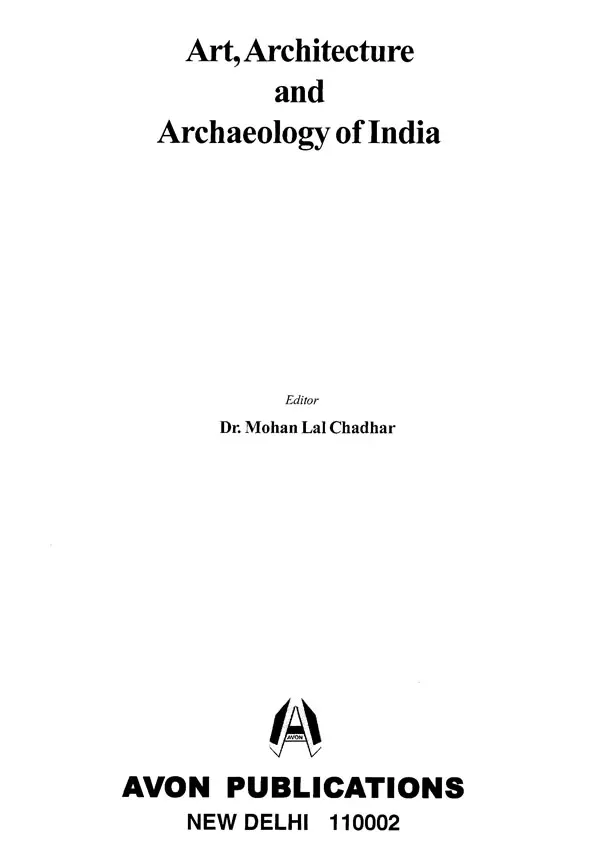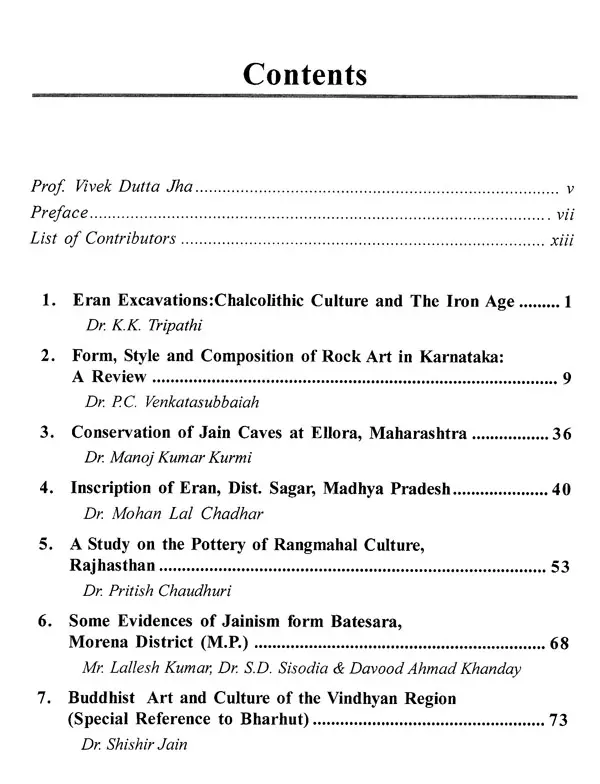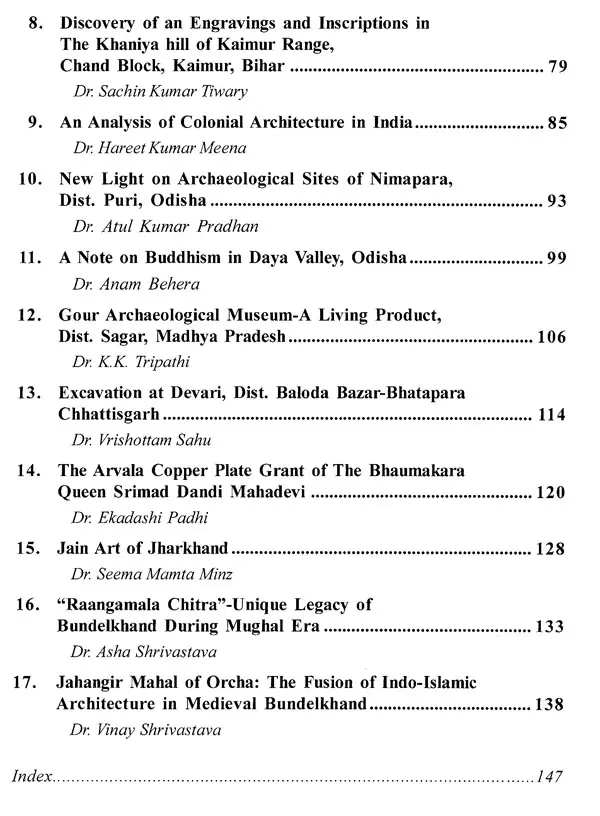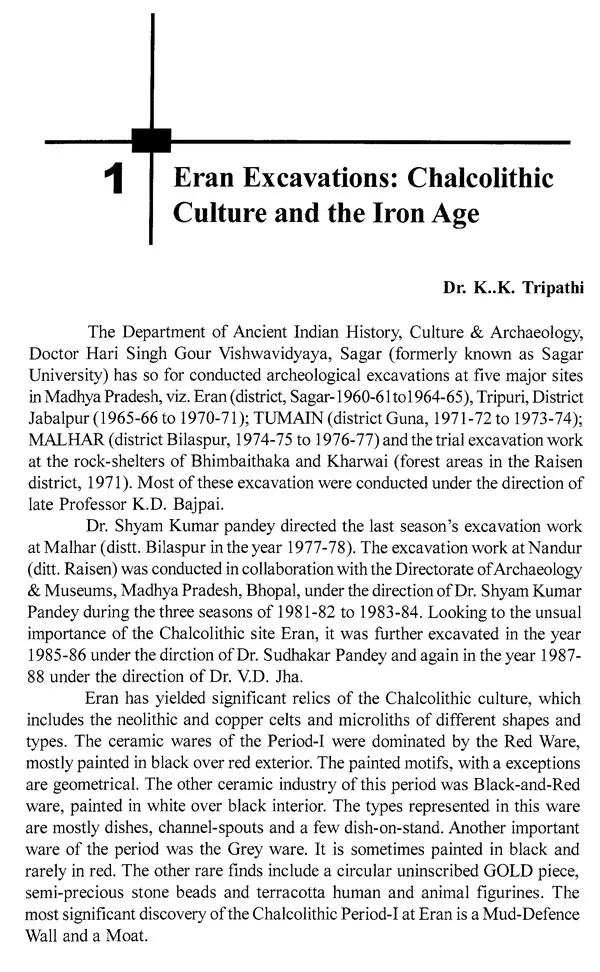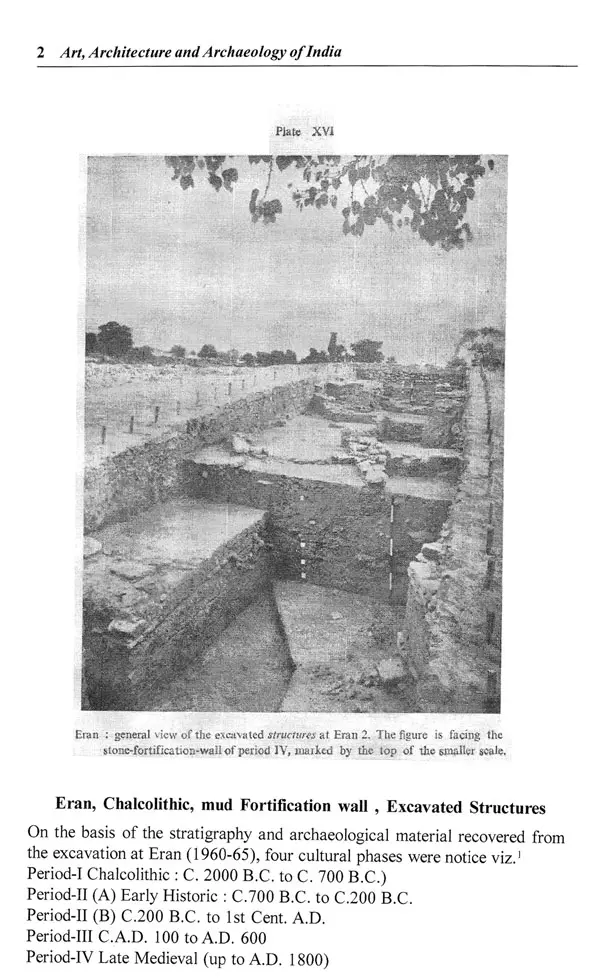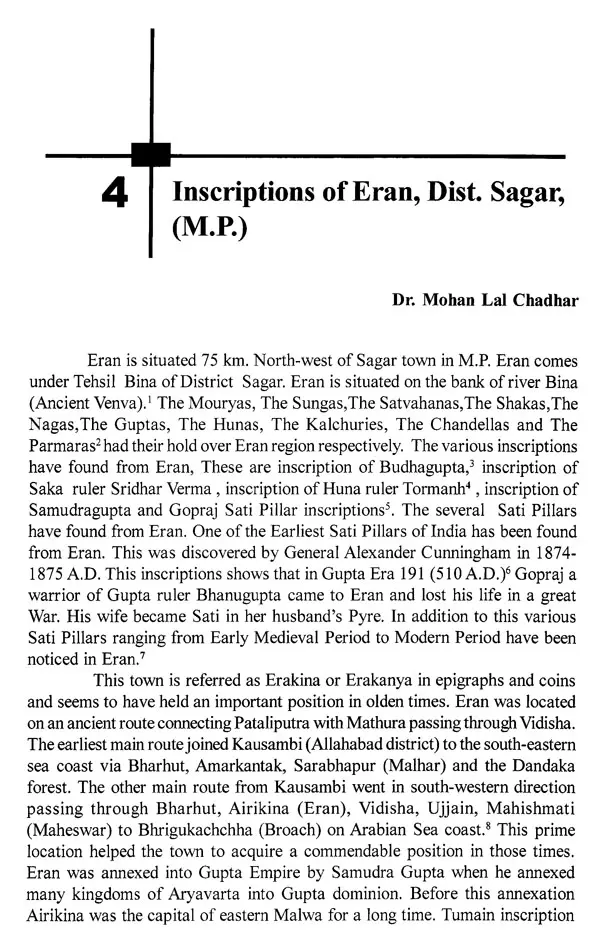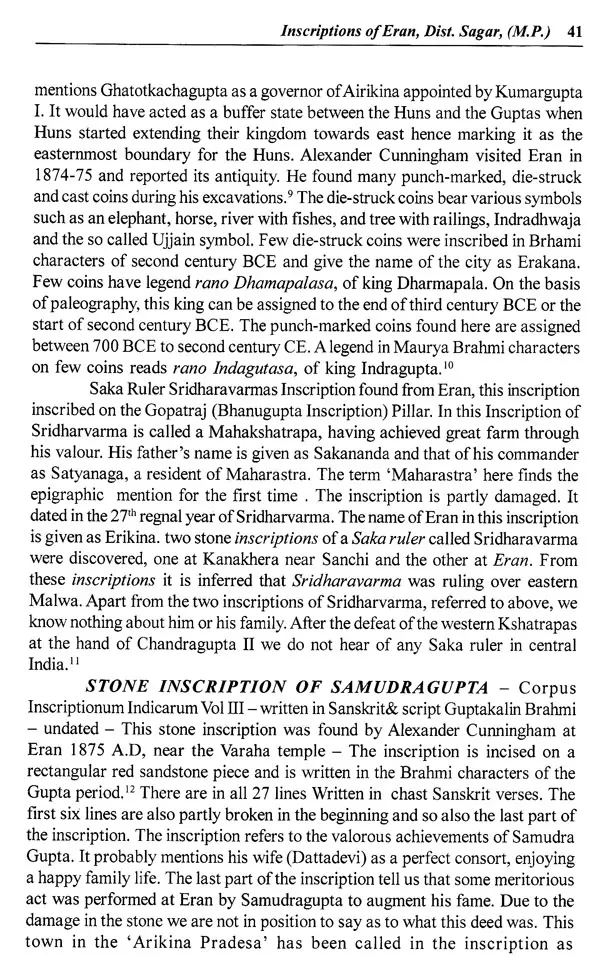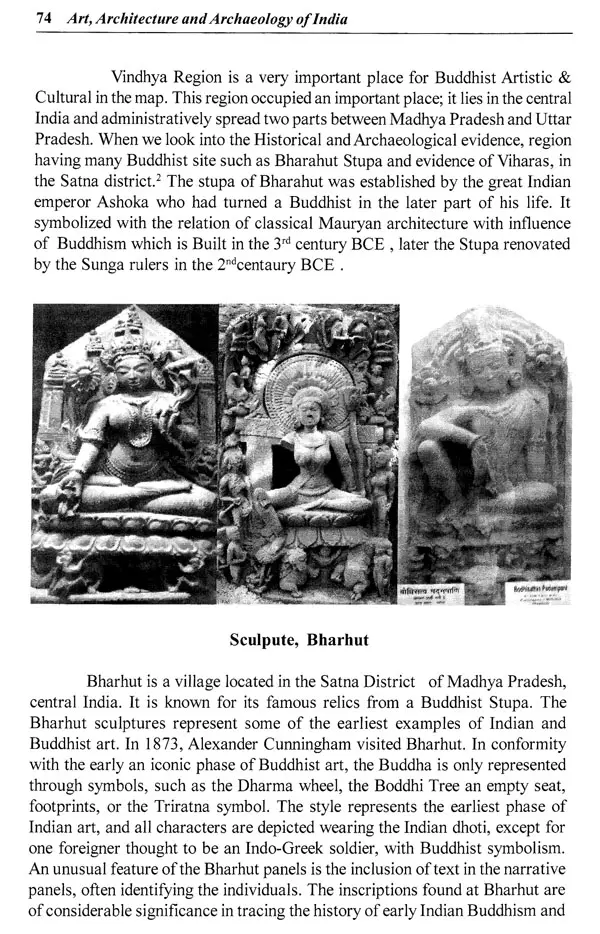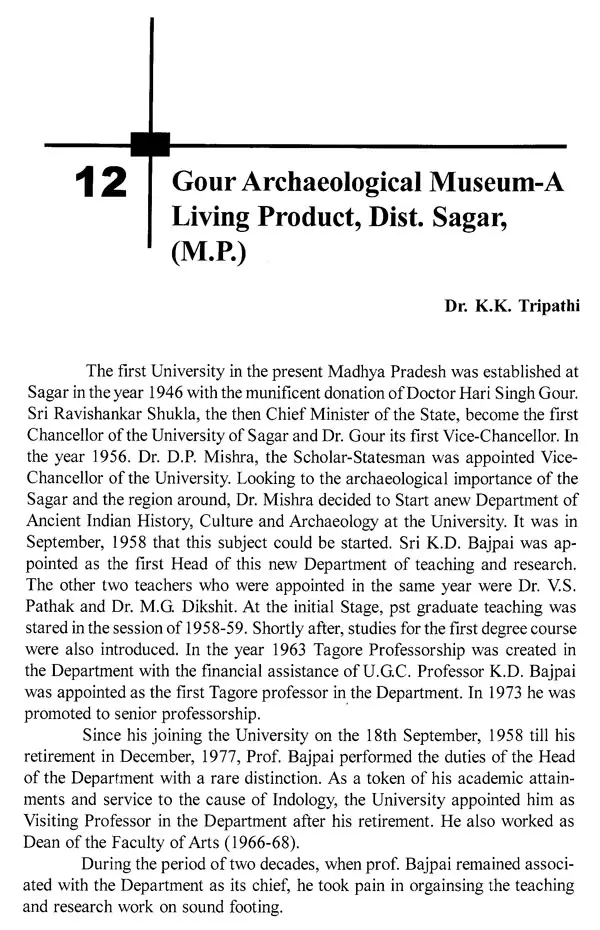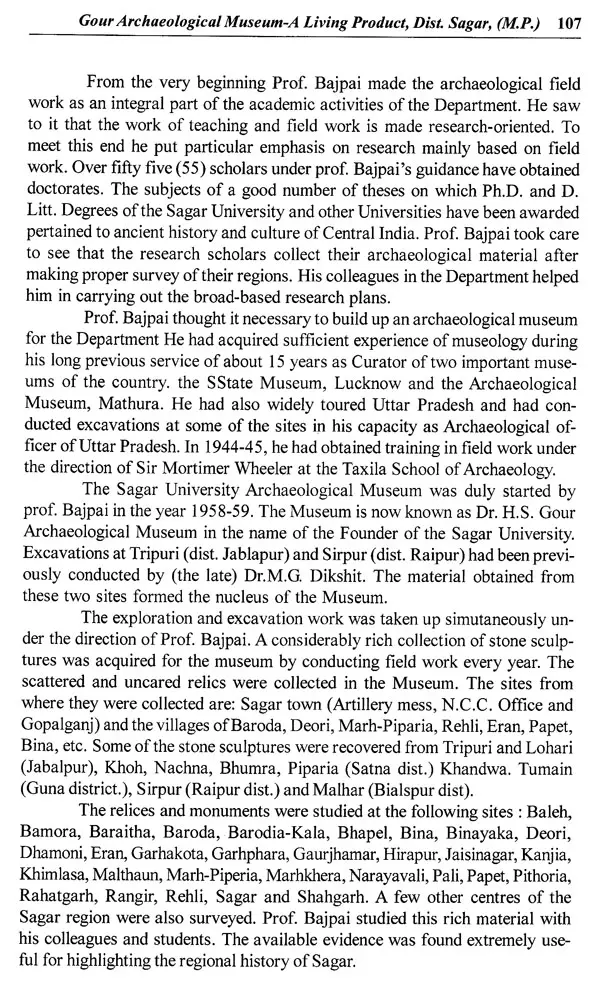
Art, Architecture and Archaeology of India
Book Specification
| Item Code: | UAR658 |
| Author: | Mohan Lal Chadhar |
| Publisher: | Avon Publications |
| Language: | English |
| Edition: | 2017 |
| ISBN: | 9789381839874 |
| Pages: | 148 (B/W Illustrations) |
| Cover: | HARDCOVER |
| Other Details | 9.50 X 6.50 inch |
| Weight | 410 gm |
Book Description
India is very rich and has yielded immense Archaeologically evidences right from the earlier period to modern times. It is famous for the later culture. Art, Archaeology and Architecture also many sites have been explored and excavated in various regions. It has been the amphitheatre of Prehistory, Proto-history and history. The papers included in the volume deal with a vast range of subjects from various themes including Iconography, Art, Architecture Numismatics, Inscription, Rock Paintings, Excavation, Exploration, Conservation, Pottery, Sculptures, Archacological Museum and Archaeology etc. The research Papers of this book throw new light on Archacology are outcome of new research of India. The present book contains 17 articles ranging the various aspects of Archaeological research of the India. It would be helpful for the teachers, scholars of Archaeology, Anthropology, History, Indian Culture, Religion Studies etc.
Dr. Mohan Lal Chadhar was born on July, 01, 1981 in Archacological Place Eran, District Sagar (M.P.) He received B.A., degree with Geography, Political Science and AIH,C & Archaeology in 2001. Subsequently, he obtained Master's degree in AIH, C & Archaeology from Dr. H.S. Gour University, Sagar (M.P.) during the session 2002 - 2003 with first position in University merit and received Gold Medal and Gour Samman. He has thereafter qualified NET-JRF, Three Subjects via Archaeology, Indian Culture and History and awarded Ph.D. degree of Dr. H.S. Gour University Sagar. He has also done Diploma in Tourism Studies from IGNOU, New Delhi and PGDCA from G.G. University, Bilaspur. He taught is the UG & PG at University Teaching Department, Sagar for three academic sessions as Lecturer on contract basis. He has published Six book and 51 research papers in Standard journals and seminar proceedings. He has credit of participating and paper presented more than 42 National and International Seminar. He was awarded JRF & SRF by UGC, 2003 to 2007 New Delhi. He has also been associated with Archaeological Exploration and Excavation of Betul and Anuppur District (M.P.). Presently, he is working as Assistant Professor AIH,C & Archaeology, Coordinator, NSS Program & In-charge Head, Deptt. of Yoga, at Indira Gandhi National Tribal University, Amarkantak (MP).
India is bounded by mighty Himalayas in then north and in the south by great oceans. On the northern side, the huge range of Himalayas render very strong frontier to this country. The other mountains like Hindukush and Vindhyachal have equally played decisive roles in molding the history of the nation. India is very rich and has yielded immense archaeologically evidences right from the earliest period to modern times. From central India, a large number of archaeological remains as Rock paintings, Stone Tools, Temples, Forts, Stupas, Sculpture, Coins, Seal, Sealing and Inscriptions have been discovered. This part of the country has been a favourite land for the archaeologist and Historian to conduct archaeological excavations and explorations. They have found several stone tools of Palaeolithic, Mesolithic and Neolithic period from the central belt of India.
The history of human settlements in India goes back to prehistoric times; though, no written records are available of this era. However, plenty of archaeological remains are found in different parts of India to reconstruct the history of this period. The development of archaeology helps much to understand the life and culture of the people who lived in this period. During this period the stone tools, hand-sized and flaked-off large pebbles were used for hunting animals. Stone implements were made of a hard rock known as quartzite. Large pebbles are often found in river terraces. The paintings and engravings found at the rock shelters give an idea about the social life and economic activities of prehistoric people. The rock art of India includes rock relief carvings, engravings and paintings. Dr. V. S. Wakankar discovered several painted rock shelters in Central India, situated around the Vindhya mountain range. Similarly, neolithic remains are found in various parts of India. There was a great improvement in technology of making tools and other equipment used by man in this period. Stone tools were now polished. The polished axes were found to be more effective tools for hunting and cutting trees.
**Contents and Sample Pages**
